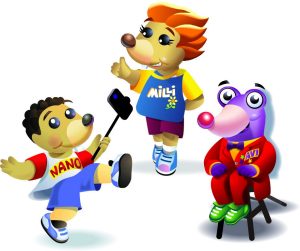By Cary A. Supalo
As scientists conduct experiments, they use images to represent the data collected by using lab equipment. Often, these images reveal amazing secrets of the universe. But for a long time, people who were blind had trouble becoming scientists, because they could not see images that other scientists had captured.
But now, scientists are discovering new ways to communicate with fellow scientists who cannot see. One method is a modern version of an old type of art called a lithophane.
A lithophane is a flat surface with slightly raised lines or shapes on it, similar to the images of people and animals you can see and feel on a coin. The oldest lithophanes were made in ancient China, by artists engraving on special materials. Many centuries later, inventors in England and France found even better ways to make lithophanes that were more detailed and life-like.
Today, lithophanes can be produced by 3D printers to represent scientific images collected in the laboratory. This can be done by connecting a 3D printer to a computer and lab equipment that’s been specially arranged. It takes longer to produce a lithophane than to print data on a standard piece of paper. However, because it’s in 3D, it can tell a lot more to a blind person who is touching it. We call this a multi-sensory approach because people can detect the information by both seeing it and touching it.
These images are the same resolution, which means they are the same size for everyone. Many times, raised-line images made for blind people are made larger, so they’re easier for a blind person to feel and understand.
Another term for this way of thinking is data visualization — the art of sharing data in ways that don’t use words. The more people in the science profession use data visualization, the easier it will be for blind persons to participate as scientists.
Lithophanes can help in other areas too. Researchers at Baylor University discovered that they could turn photographs into lithophanes, giving blind people a way to appreciate pictures in a way that they never could before.
Lithophanes have been around for a long time, but they still have a lot of value today. They’re not only helping to make scientific professions more accessible to blind people, but they’re also useful to blind people in many other ways.
Cary A. Supalo is the President and Founder, of Independence Science.


